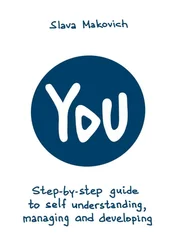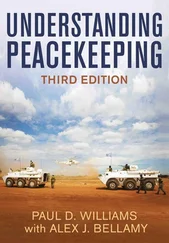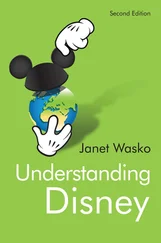Most modern sexologists—and, for that matter, social scientists (e.g., psychologists, sociologists)—believe that the study of behavior by itself is too limiting. They happily include in their research the mind’s other key processes, including its attractions, thoughts, and desires. These other aspects of the mind are widely accepted today, in part because we now have better ways of measuring them. Modern sex researchers also know that making conclusions about people based only on behavior is often fraught with problems. Here’s an example. Let’s say you know a man who has had in his lifetime one sexual partner, his wife, with whom he has sexual intercourse once a week. Based on this behavior, you should conclude that his sexual orientation is heterosexual. And yet, somehow, you later find out that this man’s sexual fantasies (reflecting his attractions), including while having sex with his wife, are exclusively of men. A shocker, to be sure! Later, you notice that, when drunk at parties, he also seems to stare rather longingly at attractive men. [5] By the way, I call this “the drunk test.” Armchair psychologists can use it to assess the deep-seated attractions, sexual and otherwise, of their friends, family, and acquaintances.
So, what is his sexual orientation: still heterosexual? I know no one who would suggest that this man is, in fact, heterosexual. This is because people implicitly believe that one’s deep-seated sexual attractions always trump overt behavior when attempting to understand the essence of a human being’s sexual orientation. Most modern sexual orientation researchers agree (Bailey, Dunne, & Martin, 2000; Bogaert, 2003; Storms, 1980; Money, 1988; Zucker & Bradley, 1995). They suggest that if we want to know whether someone is gay or straight, we should assess his or her attractions (and not necessarily his or her behaviors). In actuality, having more information, rather than less (including information about behavior), is important, but if you were to rely on only one aspect in assessing someone’s sexual orientation, it would be the person’s attractions, and to exclude this aspect is very problematic. [6] This is not to deny that there are times when we may not be able to know about a person’s true inclinations and desires, because he or she may lie (or may not know) about them. Thus, if the behavior is “observable” in some way (e.g., getting caught with a prostitute), this may provide more accurate information than what people “report” on their attractions and desires. But this does not mean that if we had a faithful window into their minds, their attractions would be a worse indicator of who they are (as a sexual being) than their behaviors. Indeed, it would not. So, I reiterate: An accurate assessment of a person’s attractions always trumps an accurate assessment of his or her behavior when it comes to understanding the true nature of that person’s inclinations.
An important reason why sexual behavior is an imperfect reflection of one’s true sexual desire and attractions is that sexual behavior often reflects a compromise between one’s own inclinations and that of others. A wife’s sexual behavior (e.g., frequency of intercourse) reflects not only her desires and inclinations but also her husband’s, and vice versa. A teenage boy’s sexual behavior (frequency of masturbation, intercourse) reflects his desires and inclinations as well as the availability of partners and the social constraints imposed by his parents and peers.
As you might expect, behavior’s imperfect reflection of one’s desires and attractions is also important in understanding asexuality. Sexual behavior—or more to the point, the absence of it—is usually not the defining feature of asexuality. [7] A recent exception to this is a study by Poston and Baumle (2010), which defined asexuality in a number of ways, including a lack of sexual behavior.
A more common definition, as mentioned, is a lack of sexual attraction—or at least the definition in recent research often includes this element (Bogaert, 2004; Bogaert, 2006b; Brotto et al., 2010). Thus, although asexual people often have less sexual experience with a partner, as one might expect, sexual experience per se would not necessarily mean that a person is not asexual (Bogaert, 2004). For example, some asexual people may engage in partnered sex (e.g., sexual intercourse), perhaps out of curiosity or perhaps to please a romantic partner. The latter type of sexual activity is most likely to occur in those asexuals with romantic inclinations; it also reinforces the distinction made earlier between romantic and sexual attraction.
It is also important to note that some people actively abstain from sex for very long periods of time (e.g., prior to marriage, chastity), and some people—celibates—actively eschew sex altogether, yet they do not necessarily lack sexual attraction. Indeed, they may be strongly sexually attracted to others but, for religious or other reasons, choose not to have sex. For example, in Roman Catholic law and theology, “Clerics are obliged to observe perfect and perpetual continence for the sake of the kingdom of heaven and, therefore, are obliged to observe celibacy” ( Code of Canon Law , n.d.). Such obligations, of course, are not always upheld in the long run. That celibacy in some forms of religious life is often so difficult to uphold attests to the fact that many celibates are not necessarily asexual. They may eventually stray and engage in some form of sexual behavior, because their sexual attractions and inclinations are so strong and overwhelm their values. That having been said, it is also not surprising that asexual people are, on average, more frequently found among the strongly religious (Bogaert, 2004). Celibacy is obviously much easier for those who are indeed asexual. A few years ago, a member of the clergy suggested to me that in his experience, asexuality was not unknown among those undertaking religious professions.
In 1980, Michael Storms recognized some of the limitations of a strictly behavioral approach to sexual orientation, including Kinsey’s traditional behavioral scale for measuring sexual orientation. Thus, Storms’s model of sexual orientation was based only on sexual attraction and not on actual behavior. He also argued that two seven-point scales/dimensions are better than one (Storms, 1980).
Storms’s two scales or dimensions decouple homoeroticism (sexual attraction to the same sex) from heteroeroticism (sexual attraction to the opposite sex). So, if someone were asked on a questionnaire to categorize his or her sexual orientation using Storms’s model, he or she would indicate the degree to which he or she has attractions to the same sex (homoeroticism) on a scale from low (one) to moderate (four) to high (seven), and then, on a separate scale, would indicate the degree to which he or she has attractions to the opposite sex (heteroeroticism), again ranging from low (one) to moderate (four) to high (seven). Having these two independent dimensions means that one can be high (or low) on one but also high (or low) on the other. Thus, one’s score on one dimension does not constrain the score on the other. This means that one can be high on both (bisexuality) or low on both (asexuality). Storms never investigated asexuals to see if this model captures their attractions accurately (i.e., low on both dimensions), but, as mentioned above, there is now some support for this model (Bogaert, 2004; Brotto et al., 2010).
Now let’s move on to the third letter of the alphabet, C. Recall that C is for cognition . Cognition is another word for “thoughts.” For example, the field of cognitive psychology deals with the processing of information and knowledge. Thus, cognitive psychologists try to understand our thoughts and their organization in the mind; how, for example, one bit of knowledge or information is linked to another and how readily accessible this bit of knowledge is to our conscious mind.
Читать дальше












